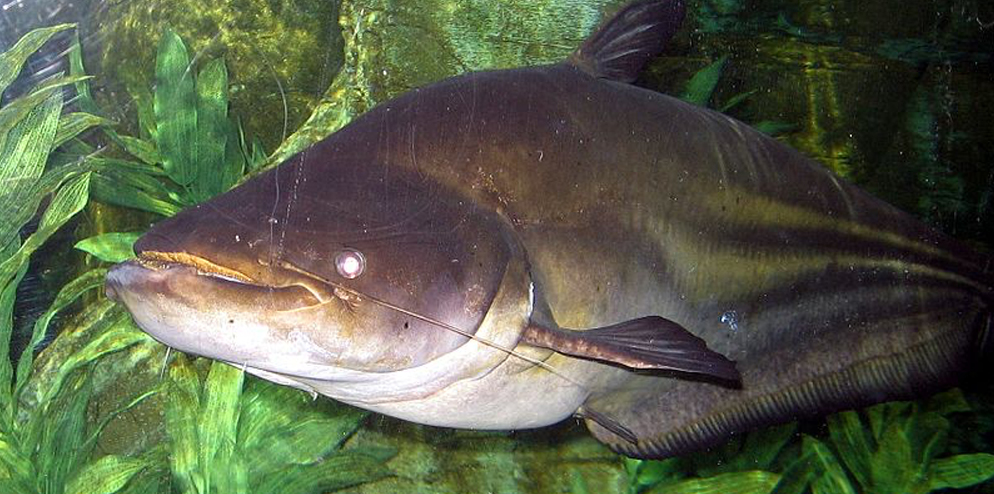September 14, 2018
Meet the Wallago Catfish or Helicopter Catfish (Wallago Leerii), a freshwater catfish which belongs to the Siluridae family.
The fish is native to Southeast Asia, and Greater Sunda Islands of Sumatra and Borneo where it is known as ‘ikan tapah’ or ‘tapa’. It is found in large rivers and lakes.
The Wallago Catfish is one of the 89 species of fish which have been identified within the Restorasi Ekosistem Riau (RER) area.
The Wallago Leerii fish can grow up to more than a metre in length. It has a dark colored body with inconspicuous silvery stripes. It does not have spines before its dorsal fin, which is small, and its pelvic fins are small.
This fish has a large mouth filled with needle sharp teeth. It also has a lower jaw which is comparatively longer than its upper jaw, and two pairs of barbs. Its upper jaw tells that Wallago leerii is an active predator which snatches its prey from the surface or in midwater. Its barbs help it to find prey in murky water.

This catfish is a piscivore – a carnivore which eats mainly fish. Its prey is commonly small fish species which reach maximum lengths of about 10 to 12cm.
The Wallago Catfish is noted to be one of the largest, voracious and predatory of local catfish species which thrive well in rivers and lakes.
This fish spawns during the rainy season. When the water rises and floods the forest floor, the fish gathers in large numbers on the forest floor to spawn.
A fish which has released eggs can be recognized from scratches on its body, as the result of hitting branches or other solid objects while it was spawning on shallow water. These marks are useful for fishermen who avoid catching fish which are full of eggs.
The Wallago Catfish has been used as food in Southeast Asia since ancient times. It is typically sold in the market fresh or as smoked fish. Its numbers have significantly declined due to over exploitation as a food fish.
Currently, the Wallago leerii has not been evaluated by the International Union for Conservation of Nature (IUCN). However, if it is not carefully managed and overfishing or destructive fishing practices continue, along with habitat destruction and introduction of alien species, the fish may no longer roam the rivers it is currently found in.